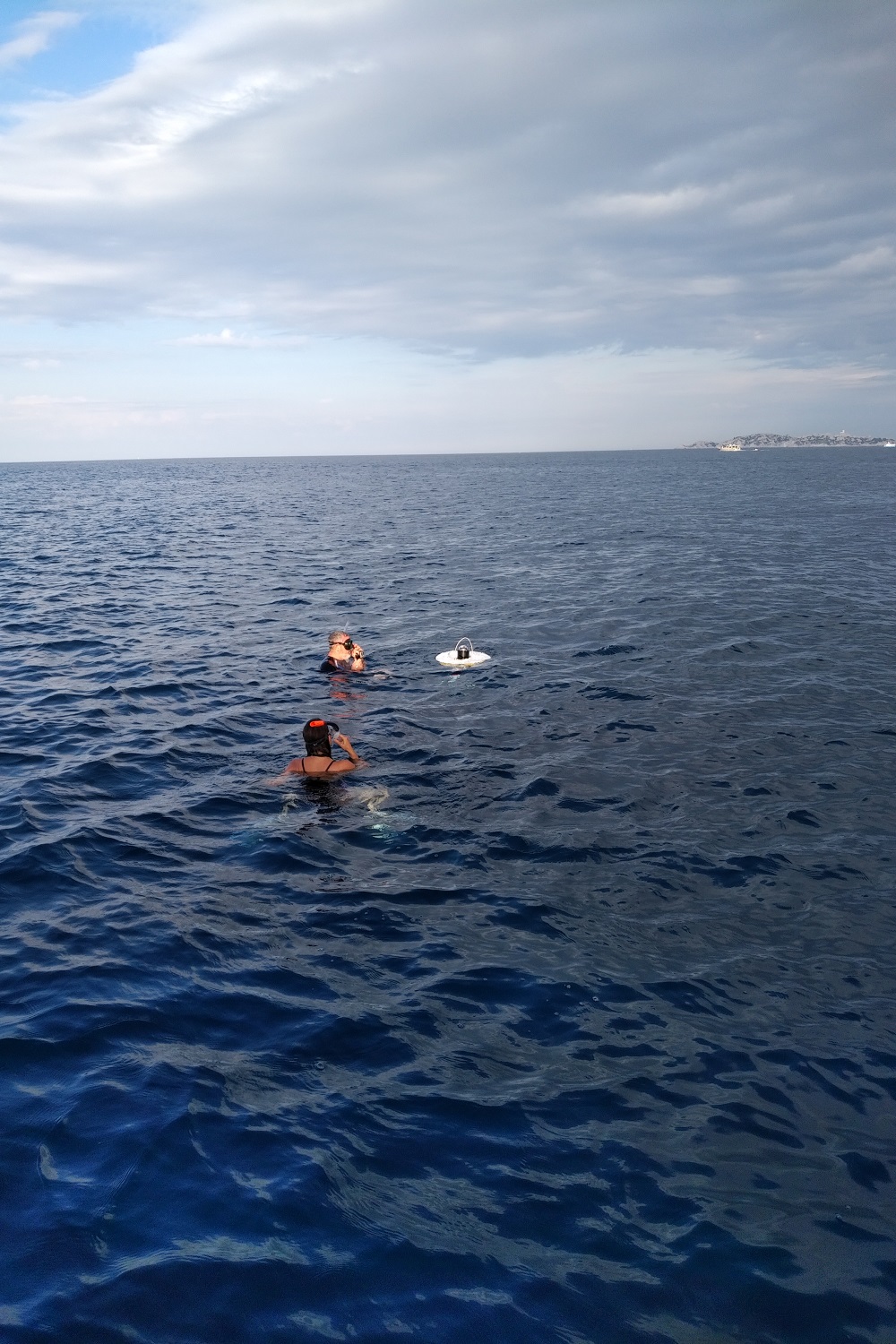The study of vertical velocities is essential for a better understanding of the fine-scale dynamics of the ocean and their impact on biogeochemistry. However, measuring vertical velocities in situ is a real challenge, due to their low intensity (a few mm.s-1) and the ephemeral nature of fine-scale structures (1-10 days).
With this in mind, MIO scientists, as part of the BIOSWOT-AdAC project (PI: F. D'Ovidio, A. Doglioli and G. Gregori - CNES-funded project) are currently developing a new oceanographic device, the VVP (Vertical Velocity Profiler), the aim of which is to take direct in situ measurements of these vertical velocities. It is equipped with salinity, temperature and pressure sensors that process the data to calculate the vertical velocity based on the principle of Archimedes' buoyancy. Any deviation from its theoretical speed of fall is related to the vertical velocities, whether ascending or descending. The oceanographers (J-L. Fuda, S. Barrillon, D. Malengros, M. Lafont, R. Tzortzis) boarded the research vessel Astroïdes on Wednesday 9 September 2020 to carry out the first sea trials of the VVP in the harbour of Marseille. A satellite beacon emits a signal to enable the onboard team to track the profiler when it returns to the surface after several dives. The VVP completed its first autonomous dives without any problems. New tests are soon planned further offshore. Stay tuned!
We would like to warmly thank the Service Atmosphère Mer (SAM), and in particular Michel Lafont, Nagib Bhairy and Deny Malengros, for their significant contribution to the creation of this prototype.

Figure 1: Oceanographers improvise themselves as divers, to keep a close eye on the VVP test in Marseille harbour.




